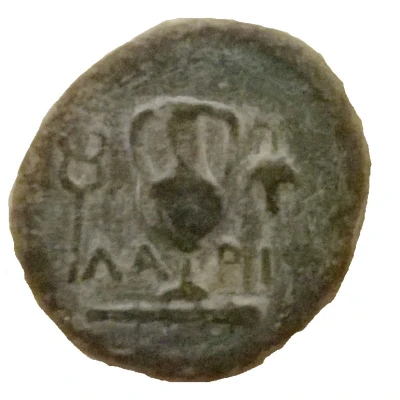


© Starnuto di topo
Hemiobol 400 BC - 300 BC
| Bronze | 5.82 g | 17 mm |
| Issuer | Larissa Phrikonis (Aeolis) |
|---|---|
| Type | Standard circulation coin |
| Years | 400 BC - 300 BC |
| Value | Hemiobol (1⁄12) |
| Currency | Drachm |
| Composition | Bronze |
| Weight | 5.82 g |
| Diameter | 17 mm |
| Thickness | 1.1 mm |
| Shape | Round (irregular) |
| Technique | Hammered |
| Demonetized | Yes |
| Updated | 2024-10-09 |
| Numista | N#113447 |
|---|---|
| Rarity index | 93% |
Reverse
Amphora; caduceus to l., grape bunch to r. Inscription: ΛΑΡΙ[ΣΑΙ]
Script: Greek
Lettering: ΛΑΡΙ[ΣΑΙ]
Translation: Larissa
Interesting fact
The Hemiobol coin was used as a form of currency in ancient Greece, specifically in the city of Larissa Phrikonis (Aeolis) during the 4th century BC. The coin's design features the image of a horse on one side and a grapevine on the other, symbolizing the region's agricultural wealth and its reputation for producing high-quality wine. Despite its small size and relatively low value, the Hemiobol coin played an important role in the local economy and was widely used for everyday transactions.